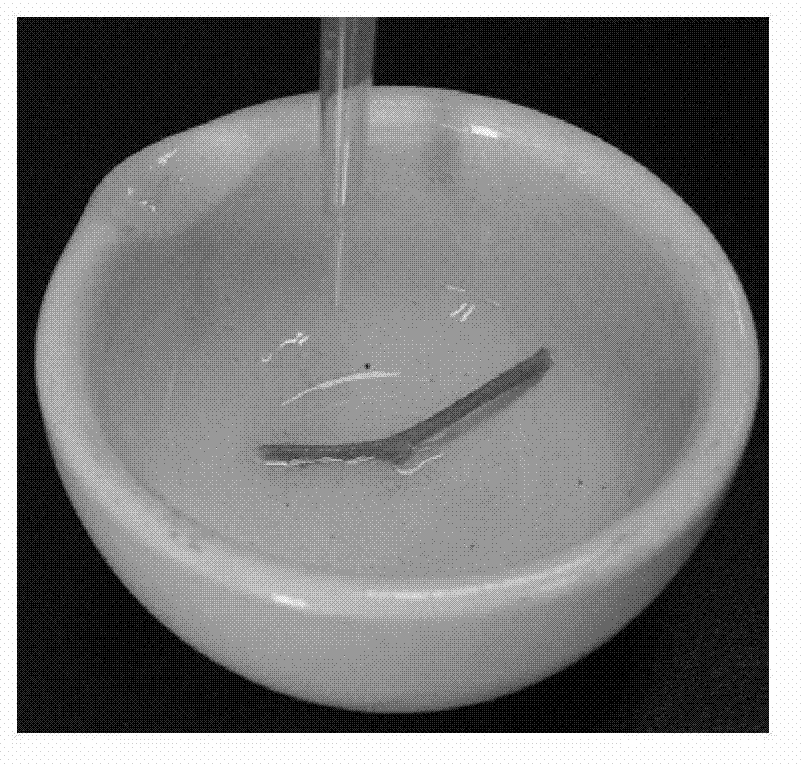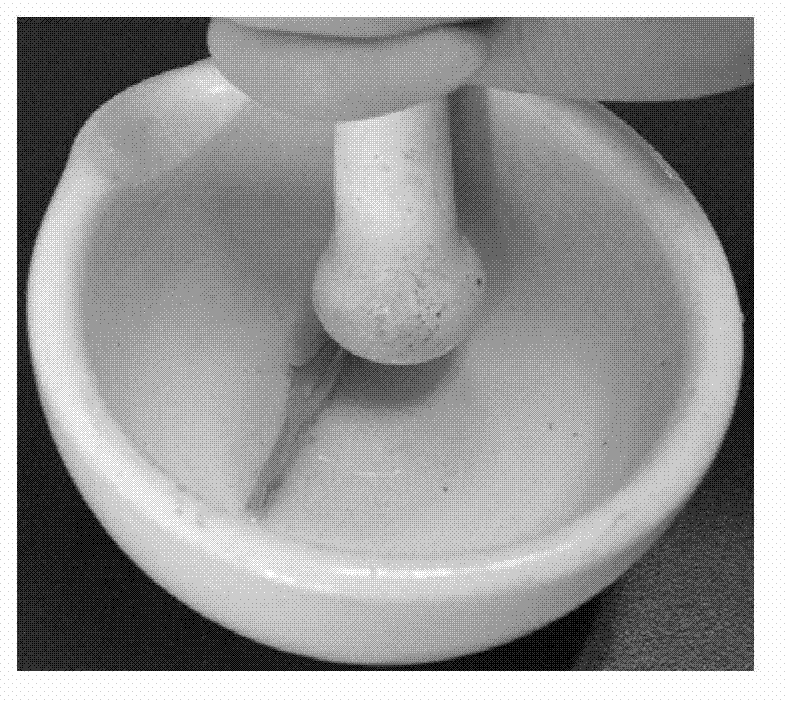Dot-ELISA (dot Enzyme-Linked Immunosorbent Assay) method and tissue printing ELISA method for detecting presence of tomato yellow leaf curl virus in plant as well as reagent kit and application thereof
A technology of tomato yellowing curved leaves and tissue imprinting, which is applied in the directions of measuring devices, instruments, scientific instruments, etc., can solve the problems of high test cost, many experimental steps, difficult to promote by non-professionals, etc., and achieves wide applicability and expanded detection. range effect
- Summary
- Abstract
- Description
- Claims
- Application Information
AI Technical Summary
Problems solved by technology
Method used
Image
Examples
Embodiment 1
[0082] Example 1: Detection of infection of tomato yellow leaf curl virus in field tomato plants by using dot-ELISA method.
[0083] 14 tomato plants with disease symptoms were collected from the farmland of Zhengzhou, Henan, and tested according to the operation method of dot-ELISA:
[0084] 1) NC membrane preparation: draw a line on the outer paper of the NC membrane with a pencil, so that the NC membrane is marked with a grid line, and the size of each hole is 1×1 cm. Mark the lower right corner of the NC membrane, and put it into a petri dish central;
[0085] 2) Sample treatment: Weigh the tomato petiole at a ratio of 1:50 (weight: volume, g / ml), add 0.01 mol / L PBS to grind the tomato tissue into a homogenous slurry ( Figure 1-3 );
[0086] 3) Spotting: After centrifugation, pipette 2 ul of the supernatant to the center of the marked grid;
[0087] 4) Blocking: After sample application, let the NC membrane stand to dry for 10 minutes, add 5% skimmed milk powder (5 g s...
Embodiment 2
[0096] Example 2: Detection of infection of tomato yellow leaf curl virus in tomato plants in the field by tissue imprinted ELISA.
[0097] 14 tomato plants with symptoms of disease were collected from the farmland in Zhengzhou, Henan, and tested again according to the operation method of tissue imprinted ELISA:
[0098] 1) NC preparation: use a pencil to draw a line on the outer paper of the NC membrane, so that the NC membrane will be marked with a grid line. ;
[0099]2) Spotting: Cut the petiole with a blade so that the cut is flush ( Figure 5 ), place the cut section in the center of the marked grid for 3~5 seconds ( Figure 6 ), repeat each sample once (use the same blade to cut another time, repeat the above operation steps), during the operation, the blade is wiped with alcohol cotton once every time a sample is cut;
[0100] 3) Blocking: After sample application, let the NC membrane stand to dry for 10 minutes, add 5% skimmed milk powder (prepared according to the...
Embodiment 3
[0109] Example 3: Development of tomato yellow leaf curl virus dot-ELISA and tissue imprinted ELISA detection kit
[0110] 1. Test principle:
[0111] dot-ELISA and tissue imprinted ELISA are ELISA detection methods based on NC membrane as a solid phase carrier, which have the advantages of simplicity, rapidity, specificity, sensitivity, easy promotion, and no need for special instruments, etc., and have broad application prospects. Spot or imprint the extract containing tomato yellow leaf curl virus sample on the NC membrane, dry to form a solid-phase antigen; yellow leaf curl virus) to form an antigen-antibody complex; then add alkaline phosphatase-labeled anti-mouse IgG anti-antibody (secondary antibody), then the anti-antibody will combine with the above antigen-antibody complex to form an antigen-antibody-enzyme label Anti-antibody complex; add a chromogenic substrate, and the enzyme on the complex catalyzes the substrate to generate a precipitated colored product for co...
PUM
 Login to View More
Login to View More Abstract
Description
Claims
Application Information
 Login to View More
Login to View More - R&D
- Intellectual Property
- Life Sciences
- Materials
- Tech Scout
- Unparalleled Data Quality
- Higher Quality Content
- 60% Fewer Hallucinations
Browse by: Latest US Patents, China's latest patents, Technical Efficacy Thesaurus, Application Domain, Technology Topic, Popular Technical Reports.
© 2025 PatSnap. All rights reserved.Legal|Privacy policy|Modern Slavery Act Transparency Statement|Sitemap|About US| Contact US: help@patsnap.com



